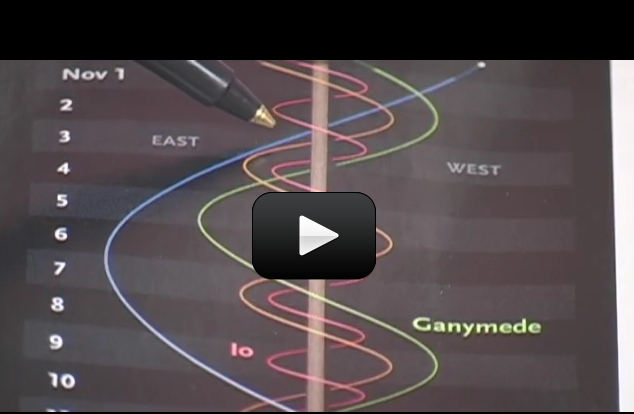On a clear night when Jupiter is up, you’ll be able to view the four moons of Jupiter (Europa, Ganymede, Io, and Callisto) and the largest moon of Saturn (Titan) with only a pair of binoculars. The question is: Which moon is which? This lab will let you in on the secret to figuring it out.
You get to learn how to locate a planet in the sky with a pair of binoculars, and also be able to tell which moon is which in the view.
Materials
- Printout of corkscrew graph
- Pencil
- Binoculars (optional)

